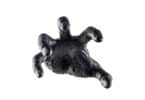Cannabis has an influence stretching throughout the world of art, literature and music. The benefits of cannabis on creativity have been realized by many and will be used by many to come. In this series on cannabis and literature, we will take a look at how cannabis has influenced literary circles, movements and individuals weaving its way into the canon of literature across the world.
In this first piece we will dive head first into the Beat Generation, the counterculture movement of the 50’s and 60’s, swinging to the sounds of Jazz, hitchhiking across the states and writing at the speed of thought. But what relationship did the beat generation have with cannabis? Pop on your flannel shirt, grab a beer and get ready to hitch a ride as we explore the Beat Generation and their relationship to cannabis.
Cannabis and art go hand in hand. Be it music, painting, writing, sculpting, or whatever your artistic muse may be, marijuana is sure to give you that creative boost to get you right in the zone. For some of the best legal products on the market, make sure to subscribe to The Delta 8 Weekly Newsletter, your hub for all things cannabis-related as well as exclusive deals on hemp-derived Delta-8 THC, Delta-9, Delta-10, thcv, thc-p, thc-o & even hhc.
Who were the Beats?
The beat generation were a group of writers, poets, thinkers and musicians operating in New York and San Francisco in the 1950’s. The most famous members were of course the founders of the group: Jack Kerouac, Allen Ginsberg and William S Burroughs, but the movement included many other notable names in poetry and the wider literary world.
The name beat comes from a conversation Kerouac had with another writer John Clelland-Holmes. They were reminiscing about the ‘lost’ generation when Holmes argued that they were ‘nothing but a beat generation’. Kerouac, Ginsberg actually met as students at Columbia university, but the movement really kicked off when Ginsberg read his poem Howl at the Six Gallery reading in San Francisco. The controversy around the poem Howl, which makes explicit references to drugs and homosexuality came to represent what being ‘Beat’ was all about, rebelling against social norms, being free to do what you want and most of all being able to express yourself.
Jack Kerouac’s novel On the Road, the holy text of beat culture, was released in 1957 and became hugely popular, elevating the beat generation to a status of stardom. The book also described drug use, parties and drinking in a way that few writers had done so before. The beat generation expanded beyond literature and soon films such as ‘Rebel without a Cause’ were being described as beat and the term beatnik eventually evolved to describe someone who’d chosen an alternative way of life, a term Kerouac despised. The beat generation and the names associated with it will live on in the hearts of any young reader who picks up their first copy of On the Road, Howl, Dharma Bums to name a few, and dreams of ‘all that road going, and all the people dreaming in the immensity of it…’
Their relationship with Cannabis
Drugs were of extreme importance to the beats. In nearly every piece of Beat literature you will find a reference to the use of and enjoyment of drugs, in fact it is easy to make the argument that the Beat Generation were the first group of writers to whom Cannabis and drug culture were essential. In ‘Howl’, there are references to people being stoned and high, in ‘On The Road’ ‘Tea’ is smoked regularly, as well as the taking of Benzedrine, another favourite of the Beats. In ‘Naked Lunch’ by William S Burroughs, an entire drug binge is chronicled. But Cannabis was their favourite.
For the beat generation Cannabis was used for conversation, for creation and to achieve more spiritual enlightenment and higher thought, Allen Ginsberg especially arguing that he used Cannabis to help him achieve a spiritual connection in his later years. Cannabis was becoming more and more popular in the 50’s especially with its import from Mexico and the rise in the Jazz scenes in many cities around the US. The Beat Generation was so intertwined with the jazz scene that Cannabis was soon picked up by many of the writers as well and became an important part of their creative processes.
The influence of African-American culture and the blues and jazz scenes were integral to the Beat generations success and in the Blues and Jazz worlds, Cannabis was quite popular. Through linking members such as Mezz Mezzrow, it was only a matter of time before the Beats came to experience Cannabis and all of the benefits it can offer.
Mezz Mezzrow
Mezz Mezzrow was a Clarinet player from Milton, Chicago. Arguably the key supplier of Cannabis to many of the beat generation and more than deserving of a paragraph of his own. Mezz became one of the key suppliers of Mexican cannabis to Harlem, New York in the 1950’s, just as the Beats were beginning to make waves. Mezzrow was exceptionally involved in the African-American Jazz scenes and would use slang, borrowed from the dialect to describe Cannabis and also to write his works with.
He wrote a famous book, Really the blues, in which includes a glossary of terms for Cannabis: Tea, grass, Jive being some of the words. Really the blues was read by all of the Beat Generation for its brilliant descriptions of the history of Jazz over the 40’s and 50’s, but also talks about Mezzrow’s relationships with drugs. Mezzrow was one of the principal drug dealers in both the Jazz and Beat scenes and arguably introduced many of the Beat writers to the drug, ‘sparking’ a beautiful relationship.
On the Road and Kerouac
One of the most influential novels of the 1950s, On The Road was published after many attempts by Kerouac to get his writing taken seriously. It revolutionised the world of literature with its brisk pace and ‘stream of consciousness’ style, almost breathlessly moving from one thought to the next. In the book Kerouac chronicles many days of travelling across America with his friend Dean Moriarty (Neal Cassady) as they drink and explore drugs in cities across the country. In On the Road, Kerouac explains how, whilst in a car full of strangers, he gets high with them and becomes instantly close in this joyous passage: “Then the strangest thing happened. Everybody became so high that usual formalities were dispensed with and the things of immediate interest were concentrated on.”
A perfect description of a good cannabis experience and evidence of Kerouac’s relationship with the drug. Another beautiful description of Kerouac’s Cannabis experiences comes later in the book as he and Dean get high together: “I saw streams of gold pouring through the sky and right across the tattered roof of the poor old car, right across my eyeballs and indeed right inside them; it was everywhere.” Kerouac was one of many writers in the Beat generation who used Cannabis as his muse, but the beauty of his descriptions of being high are second to none.
Ginsberg and Legalization
One of the most important and influential poets of the beat generation and indeed the second half of the century is Allen Ginsberg. Author of the poem Howl, (‘hollow-eyed and high sat up smoking in the supernatural darkness of cold-water flats floating across the tops of cities contemplating jazz’) Kaddish and a multitude of powerful poems, he was also one of the pioneers of the legalisation of Cannabis in the USA. After a few experiences of friends being locked up simply for the possession of a few joints (in this case Neal Cassady) Ginsberg began speaking out about America’s laws on Cannabis. He was a major advocate of Cannabis and argued for its many benefits in a long open letter, written in The Atlantic in 1966 in which he also argued that American Cannabis was dipping in quality due to its illegal status. In one quote, he talks about how he uses Cannabis to help himself appreciate certain art forms:
“Marijuana is a useful catalyst for specific optical and aural aesthetic perceptions. I apprehended the structure of certain pieces of jazz & classical music in a new manner under the influence of marijuana, and these apprehensions have remained valid in years of normal consciousness.”
Ginsberg strongly believed that many of the negative effects of Cannabis reported by the government at the time, were in fact the products of using drugs in a country where it is illegal. Stating in The Atlantic article that the fear ‘isn’t the drugs but the police’. Ginsberg was a life long advocate of legalisation and even founded the NYC magazine LeMar (Legalise marijuana)
Conclusion
The Beats loved Cannabis. They wrote about it, they used it to write, they fought for its legalisation and they spread its popularity, fighting against the stiff shirted, conservative opinions at the time. The influence of the beats even extended into the music scenes, with people like Dylan and Jim Morrisson stating how important books like ‘On the Road’ were and it is clear that the Beat way of life and attitude to drugs wore off on them. On the Road was one of the most important books in my life and it opened my eyes not only to a more ‘in the moment’ lifestyle, but also made me more confident in safely trying drugs.
Hello and welcome to CBDtesters.co, the internet’s one-stop-shop for the most up-to-date and relevant cannabis and psychedelics-related news from around the world. Read-thru the site on a regular basis to stay in-the-know on the quickly-changing landscape of legal drugs and industrial hemp, and check out The Delta 8 Weekly Newsletter, so you’re sure to get all the news first.









